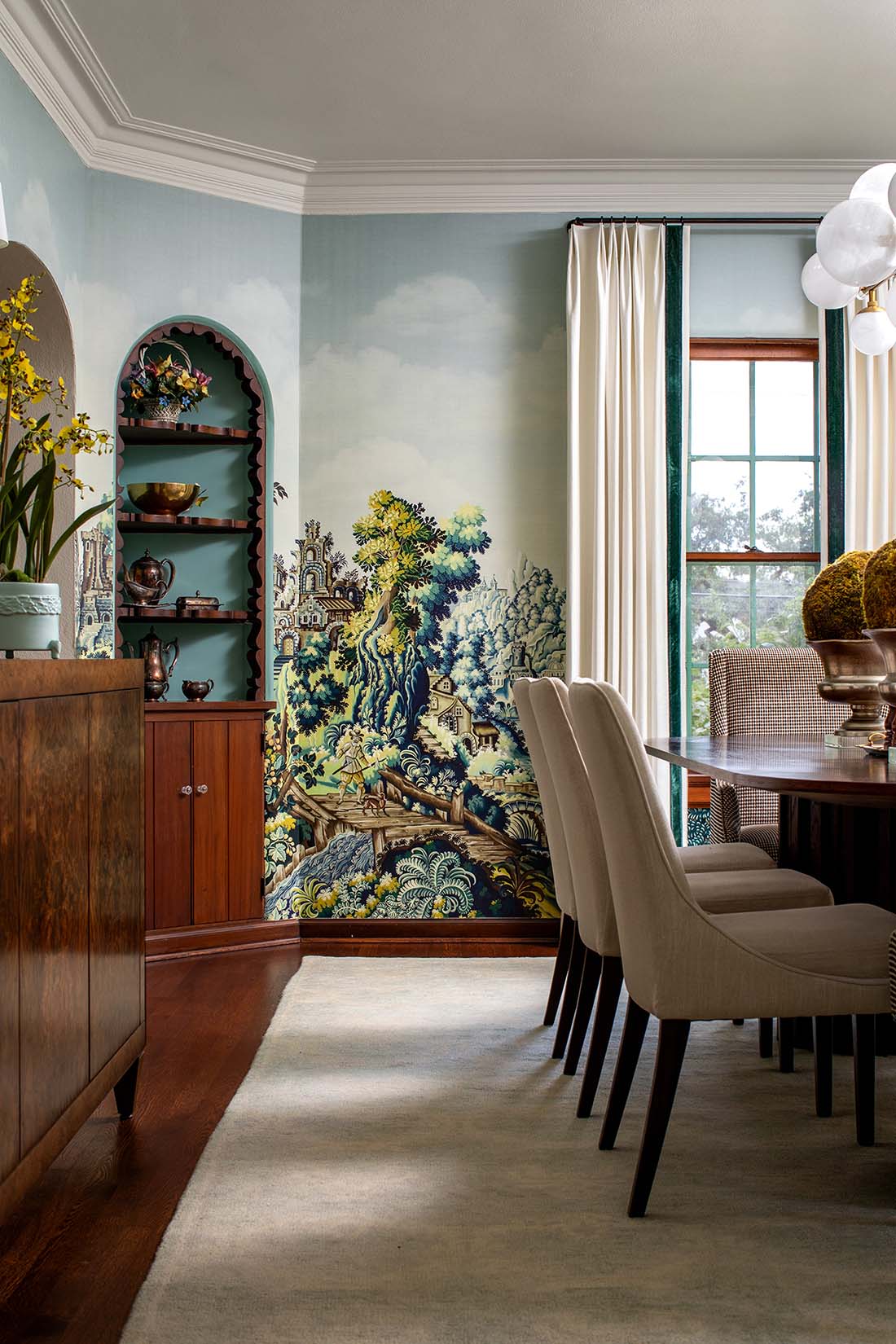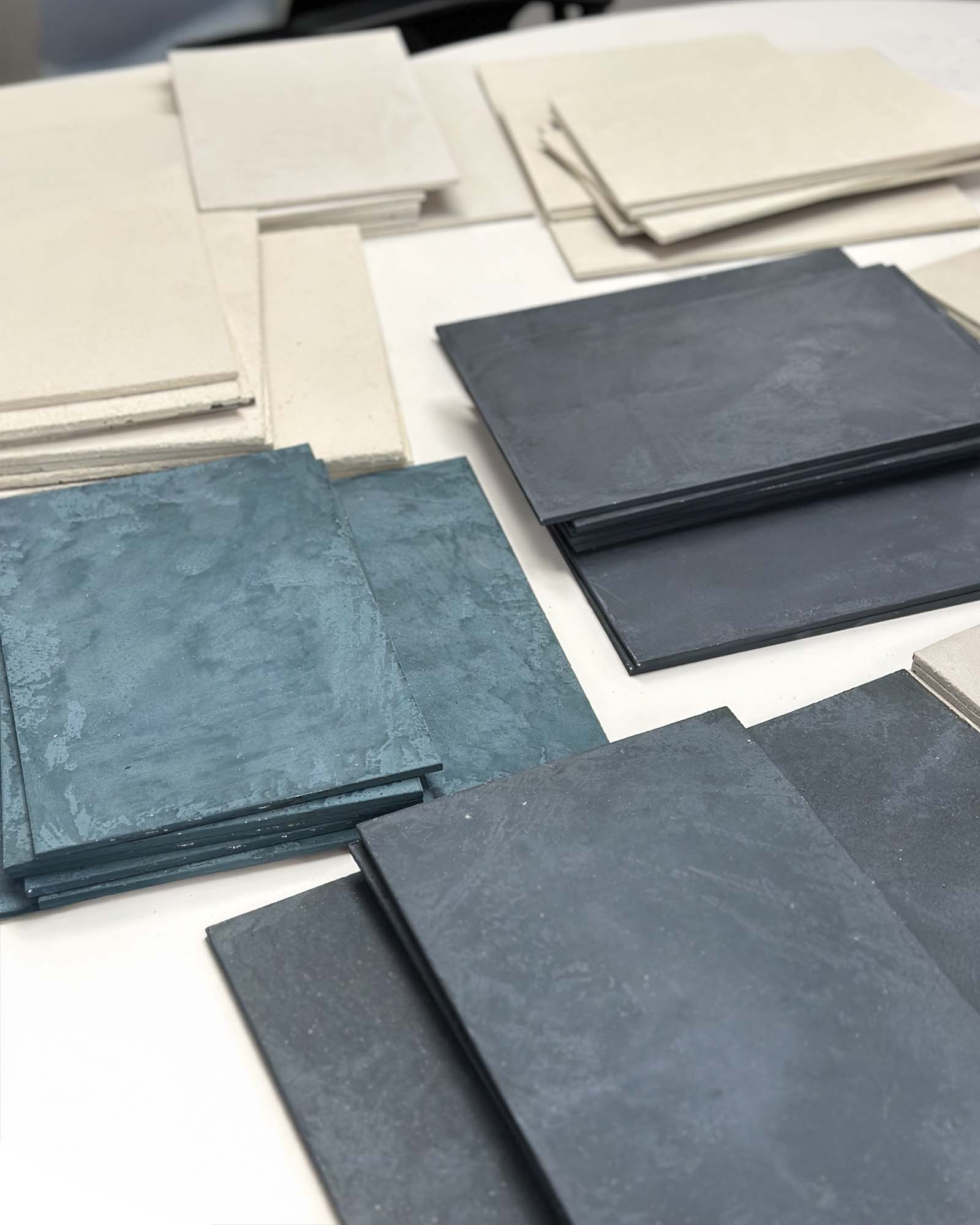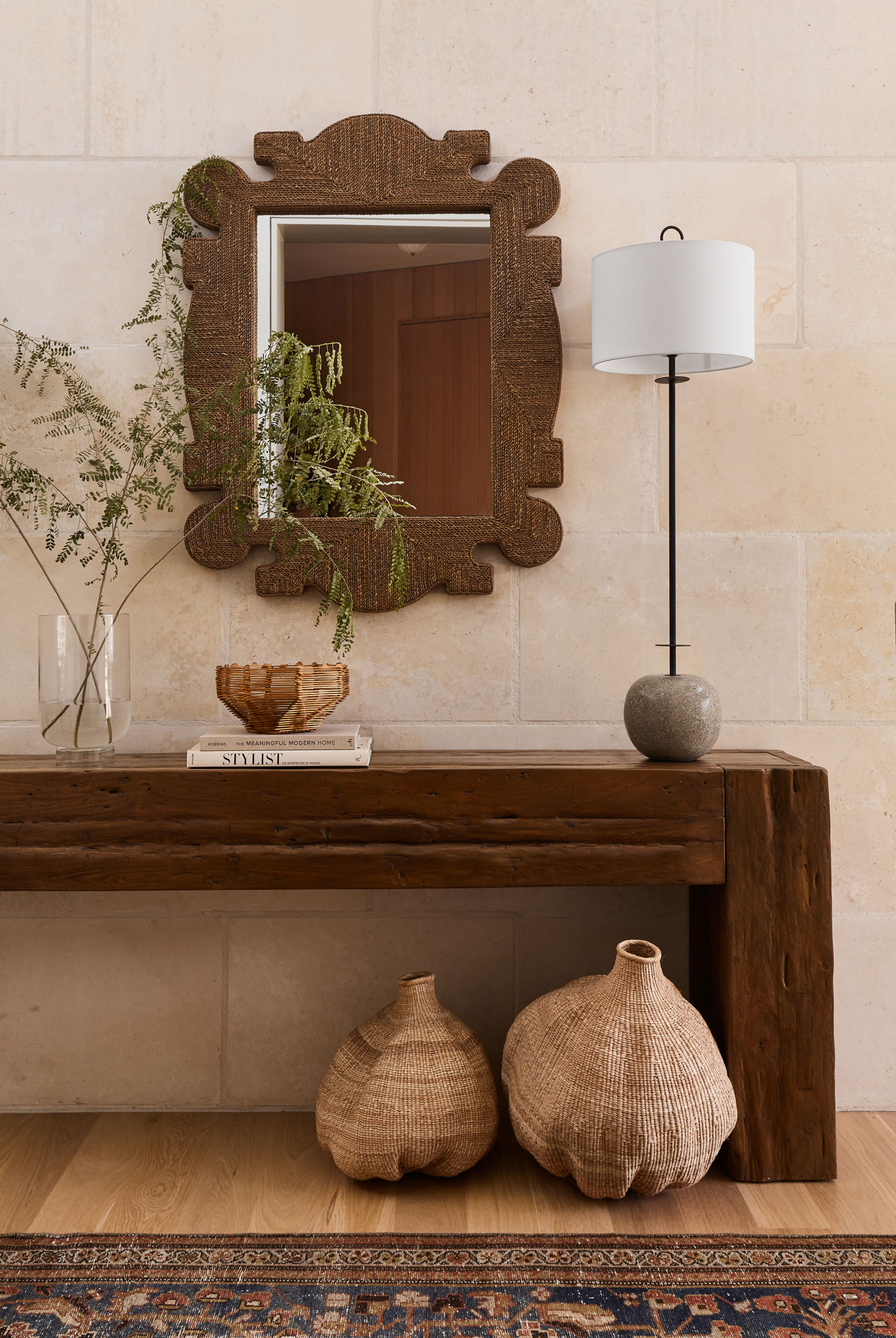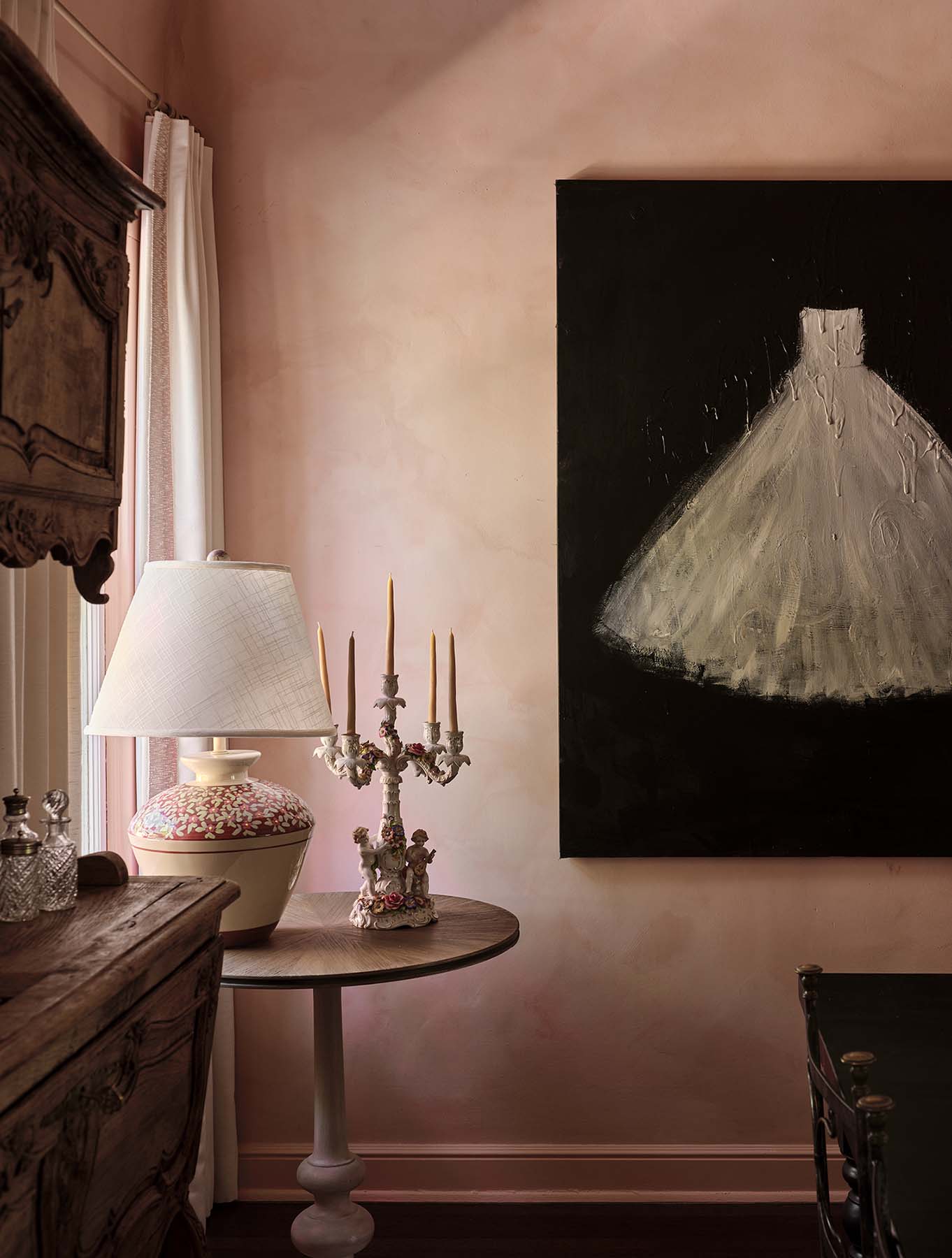Grasscloth is enjoying a bit of a revival, one that we love to see.
Today’s grasscloths are more sophisticated and elegant than the 1970’s straw-looking wallcoverings we may remember from our grandparents’ homes. The fibers and weaves are tighter and lay flatter, colors are more sophisticated, and you can find lovely versions with patterns printed on them, or hand-painted designs, or embedded details like metallics or rivets.
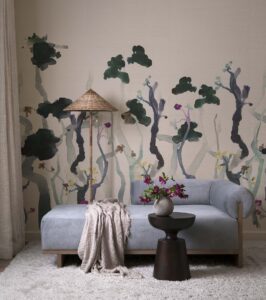
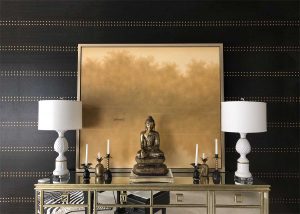
And there are many wallpapers, even those designed for heavy-duty wear such as in hotels or restaurants, that imitate grasscloth, or silk or linen, for that matter. Virtually anything fabric-based or with a “weave” will be made into a beautiful and durable wallcovering eventually.
However, the “paneled” look that you get with grasscloth or other woven-looking wallpapers is unavoidable!
What causes the “paneling” effect in grasscloth
We seem to understand this intuitively with heavier grasscloths. We know that wallpaper comes in long rolls that are installed in panels or strips on the wall, edge-to-edge. For those wallcoverings that are made of heavier fibers, we understand that those fibers won’t match up perfectly at the strips’ edges, and we accept that as part of the charm of a textured wallcovering.

But with finer grasscloth or woven options such as silk- or linen-look wallpaper, our expectations might be different.
Why you can’t judge by samples alone
Browse through the grasscloth samples in any wallpaper book and it’s easy to envision your whole room wrapped in it seamlessly, as if the wallcovering were magically painted on, or installed in wall-sized pieces, with no seams. Unfortunately, the samples of grasscloth at designer showrooms or ordered online are smaller than the 36″ width that most grasscloth rolls come in. So you don’t think about grasscloth seams at all.

This is why it’s so important to look at photos of a whole wall done in your chosen grasscloth. Those grasscloth seams, where the strips meet each other, should be visible in any good project photos, but they’re not something most of us think about when we’re shopping for grasscloth or fabric-look options.
Grasscloth seams will always be visible
The visibility of the seams between strips of grasscloth, or any fabric-look wallpaper, is unavoidable. It cannot be eliminated, it’s the nature of the beast. The texture of the fibers will not “match up” at the edges, and will not be uniform.

Many interior designers will warn their clients to expect this, so that the homeowner doesn’t think they got a faulty wallpaper or substandard installation. (Check out the red arrow in this zoomed-in photo.)

Adjusting your expectations
Therefore, if you love grasscloth or similar textured wallpapers, consider the “paneling” to be part of the charm and authenticity. There’s nothing else quite like it!

Remember, even the most high-end woven wallcovering, perfectly installed, has this “paneled” look, with visible grasscloth seams.
This is not a function of the cost of the wallcovering, or a reflection of quality. Nor it is about the skill of the installer.

Sometimes you’re lucky and can barely notice it.


More often, grasscloth wallpaper seams are quite obvious. The designer or homeowner understands this going in, and embraces the look.
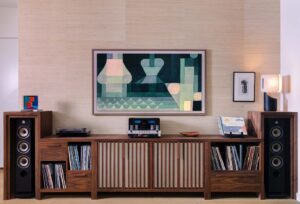
Visible grasscloth seams in dark colors or heavier weaves
For some reason, grasscloth seams do tend to be more noticeable in darker or more saturated colors, or where the grasscloth is made of a heavier weave, with thicker fibers.
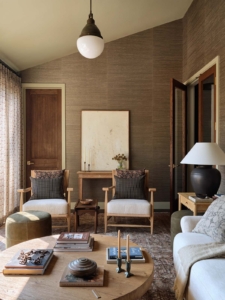

Some technical reading
If you don’t mind some technical reading, here’s a nice little article about visible seams in grasscloth, especially in terms of durability. It was written years ago for professional installers, but the first page makes the case for this beautiful wallcovering and its “natural imperfections” very well. We like the point it makes: “No perfectionists allowed!”
In short, don’t let the natural variations and imperfections of this type of wallcovering bother you. Grasscloth and other fabric-look, woven wallpapers have their own kind of charm, and add a rich layer of texture to a space that is beautiful and sophisticated.



